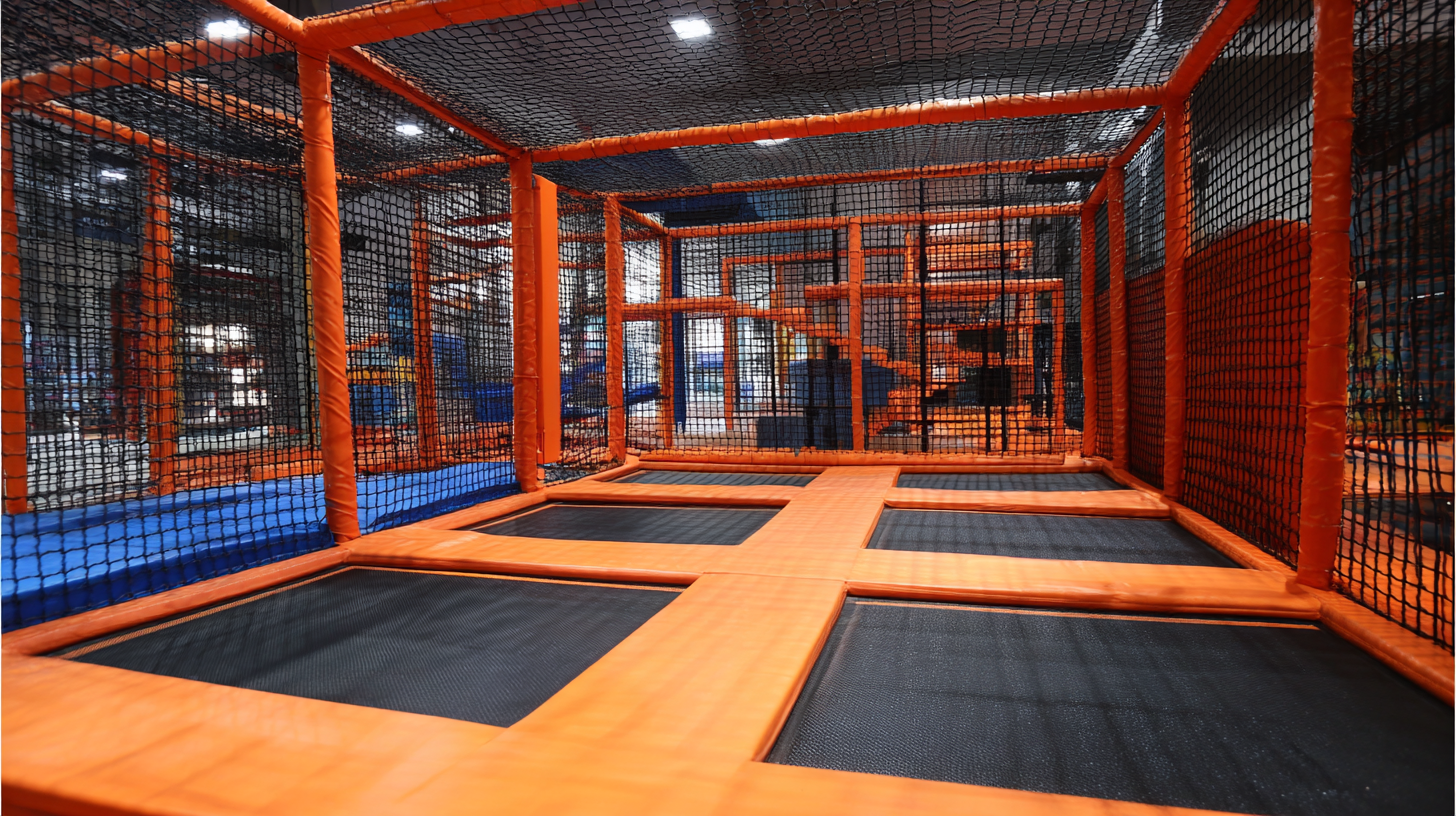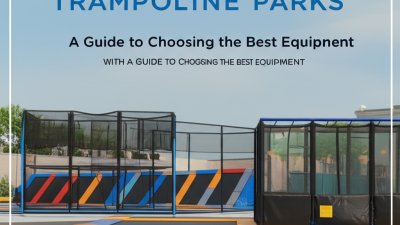
Inquiry
Form loading...
 In recent years, the concept of the "Trampoline Indoor Playground" has gained immense popularity, transforming the recreational landscape for children and adults alike. According to a report by IBISWorld, the indoor playground industry is expected to reach $1.3 billion by 2025, with trampoline parks accounting for a significant portion of this growth. This surge can be attributed to their ability to provide a unique combination of fun, fitness, and community engagement, appealing to families looking for safe and entertaining environments.
In recent years, the concept of the "Trampoline Indoor Playground" has gained immense popularity, transforming the recreational landscape for children and adults alike. According to a report by IBISWorld, the indoor playground industry is expected to reach $1.3 billion by 2025, with trampoline parks accounting for a significant portion of this growth. This surge can be attributed to their ability to provide a unique combination of fun, fitness, and community engagement, appealing to families looking for safe and entertaining environments.
Renowned industry expert Dr. Jane Leclerc, a leading researcher in children’s recreational activities, emphasizes the importance of these spaces for physical development. She has noted, "Trampoline Indoor Playgrounds not only offer a thrilling outlet for energy but also promote agility, coordination, and cardiovascular fitness in an environment that encourages social interaction." As awareness of the numerous benefits these facilities provide continues to rise, parents are increasingly recognizing them as viable alternatives to traditional playgrounds.
In this exploration of "Trampoline Indoor Playgrounds," we will delve into their benefits, key features, and essential safety tips. Understanding the dynamics of these spaces is crucial for both operators and patrons, ensuring a rewarding experience that balances excitement with safety.
Trampoline indoor playgrounds have rapidly gained popularity, providing a unique and engaging environment for physical activity. These facilities generally feature interconnected trampolines, foam pits, and various inflatable structures, allowing visitors to jump, flip, and play in a safe, controlled setting. According to a report from IBISWorld, the trampoline park industry has seen an average annual growth rate of 5.4% over the past five years, demonstrating the increasing demand for such recreational spaces.
The appeal of trampoline indoor playgrounds lies in their ability to combine fun with fitness. Research from the American Council on Exercise (ACE) indicates that bouncing on a trampoline can burn up to 1,000 calories per hour, making it an effective workout. Furthermore, these playgrounds often designed with adaptive features cater to all age groups, making them accessible for families. Social interaction and teamwork are fostered through various activities and challenges, enhancing the overall experience for participants. Safety remains a top priority, and most facilities implement strict guidelines and employ trained staff to supervise activities, ensuring a safe environment for all jumpers.
| Feature | Description | Benefits | Safety Tips |
|---|---|---|---|
| Open Jump Areas | Large spaces filled with trampolines for free jumping. | Enhances physical fitness, coordination, and fun. | Always jump within your limits and follow staff instructions. |
| Dodgeball Courts | Trampoline areas designed for playing dodgeball. | Encourages teamwork and social interaction. | Use soft balls and be mindful of your surroundings. |
| Foam Pits | Pits filled with foam blocks for safe landings. | Provides a safe way to practice flips and tricks. | Avoid diving headfirst into the pits. |
| Toddler Areas | Safe zones for younger children, often with smaller trampolines. | Ensures safety for younger jumpers while promoting activity. | Supervise children at all times and limit jumpers based on age. |
| Fitness Classes | Structured classes focusing on exercise through trampoline workouts. | Boosts cardiovascular health and encourages exercise enjoyment. | Consult with instructors on any health concerns before attending. |
Trampoline indoor playgrounds offer a unique blend of fun and fitness for both kids and adults. These vibrant spaces are designed to promote physical activity through enjoyable experiences, transforming the typical notion of exercise into something engaging and accessible. For children, these playgrounds are a fantastic way to burn off energy while improving balance and coordination. Adults can also reap the benefits, as trampolining is known to provide a full-body workout that boosts cardiovascular health, agility, and strength.
In addition to the health benefits, trampoline indoor playgrounds serve as excellent venues for family bonding. Engaging in jump sessions together allows families to communicate and connect, fostering a sense of teamwork and support. It’s a perfect way to encourage healthy habits while making lifelong memories.
**Tips for Safety in Trampoline Parks:** Always supervise children, especially in active play areas. Ensure that kids wait their turn and avoid overcrowding on the trampoline surfaces to prevent accidents. Lastly, encourage proper landing techniques to reduce the risk of injuries. These simple precautions can enhance the overall experience and keep everyone safe while having fun.

When considering a trampoline indoor playground, essential features play a pivotal role in ensuring a safe and enjoyable experience. According to a report by the International Association of Amusement Parks and Attractions (IAAPA), safety measures are paramount, and playgrounds must adhere to strict industry standards. Look for design elements such as high-quality safety nets, padded landing areas, and clearly marked exit paths, which can significantly reduce the risk of injuries. Data indicates that facilities equipped with these safety features can reduce accidents by up to 50%.
Additionally, the variety of trampoline options available can greatly enhance the user experience. A comprehensive playground should include different types of trampolines, such as foam pits, basketball hoops, and dodgeball areas, catering to various age groups and skill levels. The 2022 Sport and Recreation Industry report emphasizes the growing demand for creative play environments, stating that 78% of families prioritize diverse entertainment options when selecting an indoor playground. By providing multiple attractions within a single venue, operators can improve customer satisfaction and encourage repeat visits.
When considering trampoline indoor playgrounds, safety should always be the primary concern. According to the American Academy of Pediatrics, approximately 14,000 trampoline-related injuries occur annually in the United States, highlighting the importance of stringent safety guidelines. Trampoline parks are required to implement specific safety measures, including clear signage, padded corners, and supervision by trained staff to mitigate risks.
Tips for a safer trampoline experience include ensuring that all jumpers are of similar size and skill levels to avoid collisions. Furthermore, maintaining clear rules, such as limiting the number of jumpers on a trampoline at one time, can significantly reduce the likelihood of injury. Regular inspections of equipment and facilities, as recommended by the Association for Challenge Course Technology, are essential to ensure that all trampolines meet safety standards.
Additional best practices involve providing protective gear—like non-slip socks—and educating participants about proper landing techniques. It’s crucial for the management of trampoline parks to monitor behavior closely, correcting unsafe jumping practices immediately to foster a safer environment. Implementing these safety measures can create an enjoyable experience while minimizing the risks associated with trampoline play.
The trampoline indoor playground industry is set to see exciting trends and innovations in 2025, as operators seek to enhance visitor engagement and safety. One of the primary trends is the integration of augmented reality (AR) experiences within trampoline parks. By incorporating AR elements, visitors can interact with digital objects and challenges while bouncing, creating a more immersive and playful environment. This technology also serves to enhance safety by providing visual guidelines and game prompts that help jumpers maintain proper form and avoid accidents.

Another notable innovation is the adoption of advanced safety systems, including smart sensors that can detect and alert staff to potential hazards or overcrowding in specific areas of the playground. These systems will not only ensure a safer experience for users but also allow for better crowd management and operational efficiency. Additionally, eco-friendly materials and sustainable building practices are becoming increasingly prevalent in the design of trampoline parks, appealing to environmentally conscious consumers and demonstrating a commitment to sustainability within the entertainment industry. Together, these trends are paving the way for a more engaging, safe, and responsible future for indoor trampoline playgrounds.






